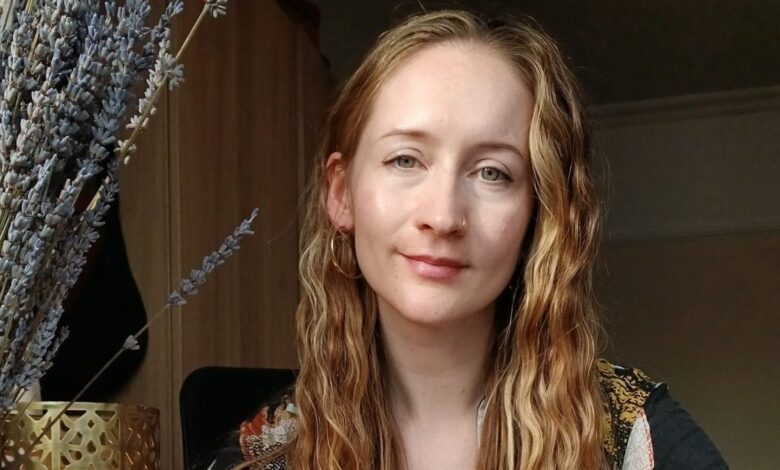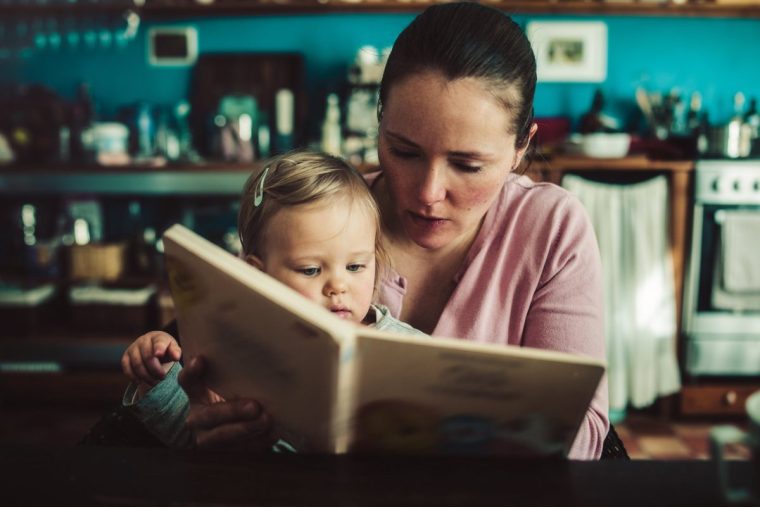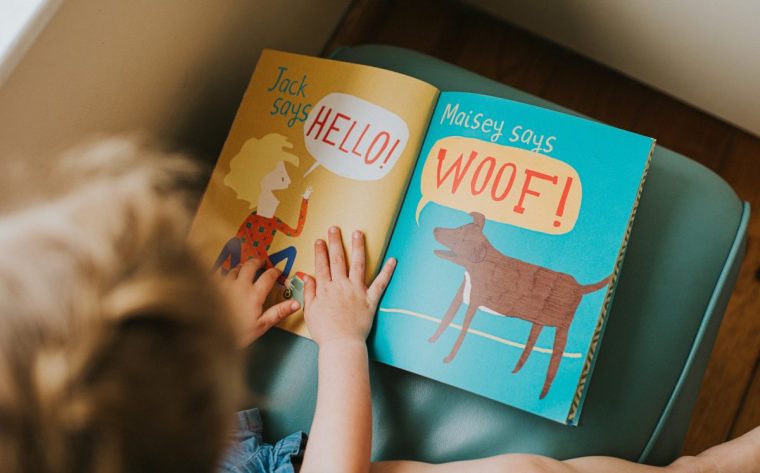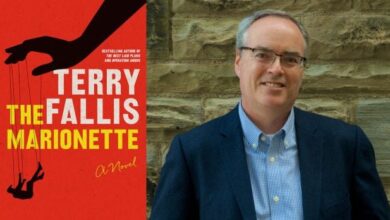I’m a best-selling children’s author – this is how to write a good book for kids

When I meet someone new, the conversation often goes like this: “What do you do?” “I’m a children’s book writer.” “Oh, I have a great idea for a book… a toaster who wants to be a pop star!”
But despite what people think, it’s surprisingly difficult to write a good picture book. With a standard length of just 32 pages and around 1,000 words to play with, you must weave a satisfying story that is concise, engaging and entertaining enough for an audience who are forever tempted by one more episode of Bluey. How do you write a story that will stand out on a crowded bookshelf? Where do you even start?
My journey into children’s book writing was slightly accidental. When I graduated, I just knew I wanted to do “something creative”. Luckily, a supportive friend weighed in with a suggestion, presumably inspired by watching me spend the past three years knitting, painting and learning the ukulele rather than going to English lectures. “You’re basically a child – have you considered children’s book publishing?”
I found myself an editorial role that involved an unexpected amount of writing, and soon I was crafting stories every day. In 2016, I wrote Never Touch a Monster – a touch-and-feel baby book with silicone textures about the dangers of getting too close to a monster.
With my rhyme (“You must never touch a monster – you must always hurry by. Just keep on walking past it, and don’t look it in the eye!”) and Stuart Lynch’s hilarious illustrations, the range has now sold more than 24 million copies worldwide. Happy accident number two – I was good at writing. And more importantly, I absolutely loved it.
So here is my guide to writing a children’s book.
Who are you writing for?
Children’s books fall into a few categories. Baby board books for ages 0-2 are usually around 12 pages long with minimal text. Picture books are generally around 1,000 words, and allow a broader range of topics for ages 2-5. Older children (ages 6-10) graduate onto chapter books, which have much more text split into short, easy-to-read chapters. Young adult fiction (YA) is for older children and covers more adult topics. Each comes with its own challenges and rewards, but I’ll be focusing on my specialism – picture books.
Pick a theme
Consider your audience – what might appeal to them? Making friends, tackling emotions, starting school… these are all great themes for the picture book age group. Once you’ve chosen a theme, you can build your story out from there by creating the characters and a plot.
The book doesn’t necessarily need a moral or purpose. I love adventures and funny stories (as an editorial consultant on Tom Fletcher and Dougie Pointer’s best-selling The Dinosaur that Pooped series, I’m also a fan of scatological stories for this age group). But children must be able to identify with the core emotional journey in some way. And then the story around it can be as fun and silly as you want.

To rhyme or not to rhyme… that is the question
This is the choice every picture book author faces. When done well, rhyming text is engaging, memorable and fun to read aloud. Surely every parent can now reel off Julia Donaldson’s classic rhyming lines: “Silly old owl. Doesn’t he know? There’s no such thing as a Gruffalo.” But prose is less restrictive. It allows you the space to explore your characters, and it can still be lyrical. In the past, I’ve written whole stories in rhyme, only to convert them into prose to allow more depth and nuance.
Some publishers prefer prose, as rhyming text is harder to translate into other languages. But in my experience, that doesn’t stand in the way of them considering a rhyming story… as long as it’s engaging, it scans (the rhythm is consistent and the emphasis lands in the right places) and holds a rich narrative. Ultimately, it’s down to what suits your story.
Build your world
When I’m starting a new story, I make a document for my character descriptions, synopsis and setting. Whether your main character is a child, a caterpillar or candy floss, they need depth. Describe them, identify their needs, think about their voice. Crucially, you need to know what you want them to achieve, and what will change by the end. It’s also a good idea to do some world-building. Where is your story taking place? Inside a dragon’s cave? Up in space? Even if it doesn’t end up in your text, creating a world that you can picture will make for a richer story on the page.
Get plotting
You’ve got a character. You have a great setting. You know whether to write in rhyme or prose. But what is going to happen in your story? Write a short synopsis where you plot it out. And if you can’t sum up the core story in a couple of sentences, it’s probably too complicated to be a picture book. I once wrote a Christmas picture book about a family of Brussels sprouts who try to cover up their stinky smell with cranberry sauce to better fit in with the other food in the kitchen – and that’s the whole story right there.
Create an obstacle
I was once told that for every story, you should introduce your character, put them up a tree, throw rocks at them and get them out of the tree again. Stories without conflict are boring. Create an obstacle.
Consider your structure and pacing
As I’ve already mentioned, the standard length of a picture book is 32 pages. This is flexible, but it’s a very useful framework to work to. Think about the structure of your story – how quickly are you getting into the action? In picture books, you don’t want too much to happen on each “spread” (two pages side by side), or it becomes hard for children to follow.

Think visually
In picture books, the illustrations go hand in hand with the text. As you write, try to think about how your story might be visualised. It can be tempting to write too much and describe every little thing, but remember just how much can – and should – be expressed in the artwork.
Dialogue
Dialogue is so important in picture books – the story will probably be read aloud. Give the characters distinctive voices, which will be fun to perform for children.
Descriptive language
This transports people into the world you’re creating. Think about how you might convey a character’s feelings using language that children will understand and recognise. Instead of saying, “Alex felt scared,” you might say, “Alex felt a strange, swirly feeling in her tummy.”
Read your story aloud
Once you’ve written a draft, read it out loud to yourself (or to other people, if you dare). Are you stumbling over any sentences or rhymes? Are you getting bored during any sections? If so, those areas need work. With rhyming texts, it’s not enough just to have the last word of each line rhyme. If the rhythm is inconsistent, it’s hard to follow.
Brainstorm your title
The right title will convey the tone and content of your story – is it funny or sentimental? I’ve been in meeting rooms full of editors agonising over getting that elusive perfect title, knowing how vital it is. People really do judge a picture book by its cover, and although a lot of it is down to the design and illustration, a snappy title will make agents, publishers and buyers want to read your story.
Approach agents
So you’re ready to put your story into the world – what next? Most publishers nowadays won’t accept unsolicited manuscripts, so I would always recommend getting an agent. You will need to write an accompanying query letter – the letter sent to publishing houses to propose ideas – and it’s a good idea to have some more story ideas up your sleeve.
The magic thing about picture books is how much they stay with you throughout your life. Ask most people about the picture books they read as a child and their eyes will mist over with nostalgia, recalling classics like Where the Wild Things Are or The Tiger Who Came to Tea.
Sadly, there is a way to go before picture books are representative of all children, but that is why more people should write them. A richer pool of people writing stories informed by their own life experiences can only mean more children seeing themselves reflected in the books they read.
So, if you have a story to tell, I urge you to go and write it.




